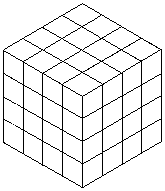On a new HBO series that opens at 9 PM ET tonight —
|
Watching Westworld , you can sense a grand mythology unfolding before your eyes. The show’s biggest strength is its world-building, an aspect of screenwriting that many television series have botched before. Often shows will rush viewers into plot, forgetting to instill a sense of place and of history, that you’re watching something that doesn’t just exist in a vacuum but rather is part of some larger ecosystem. Not since Lost can I remember a TV show so committed to immersing its audience into the physical space it inhabits. (Indeed, Westworld can also be viewed as a meta commentary on the art of screenwriting itself: brainstorming narratives, building characters, all for the amusement of other people.) Westworld is especially impressive because it builds two worlds at once: the Western theme park and the futuristic workplace. The Western half of Westworld might be the more purely entertaining of the two, with its shootouts and heists and chases through sublime desert vistas. Behind the scenes, the theme park’s workers show how the robot sausage is made. And as a dystopian office drama, the show does something truly original. — Adam Epstein at QUARTZ, October 1, 2016 |
"… committed to immersing its audience
into the physical space it inhabits…."
See also, in this journal, the Mimsy Cube —
|
"Mimsy Were the Borogoves," "… he lifted a square, transparent crystal block, small enough to cup in his palm– much too small to contain the maze of apparatus within it. In a moment Scott had solved that problem. The crystal was a sort of magnifying glass, vastly enlarging the things inside the block. Strange things they were, too. Miniature people, for example– They moved. Like clockwork automatons, though much more smoothly. It was rather like watching a play." |

















